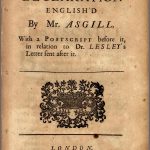Here are examples of documents from all across the Highlands. Clicking on the images will allow you to see them in more detail. The images supplied are for educational purposes so please don’t use them for other reasons or share them online – thank you!
Fake News and Reliable Sources
Sometimes things are circulated as news following a genuine mistake, someone can mistakenly think something and pass it on. Before long it’s seen as a fact. This can be seen in the example from the Oban Times about the sea serpent. However, sometimes things are a more deliberate attempt to mislead or convince people of something (or stop them from seeing other points of view). For instance, the 1842 letter from Lachlan Mackintosh in which he buys over a newspaper whose politics he doesn’t agree with. It is very difficult to be sure which sources are reliable. You have to try and think what the writer’s/photographer’s motivation might be and whether they’re trying to convince you of something or sell you something. Words can be carefully picked and are very powerful.
Newspapers
Below are some newspaper articles that show various instances of fake news. The first two are from the Oban Times about an alleged sighting of a ‘Sea Serpent’ at Kilmory Bay, Ardnamurchan. The writer states that: ‘… even credible and trustworthy people may occasionally become the victims of an optical delusion.’ The next is an extract from the newspaper Clarion of Skye. The first story, ‘The Italian’s Monkey’ shows that people can be very sure of facts in the moment, but later turn out to be mistaken. The last, from the Northern Ensign, just shows that anything can be published!
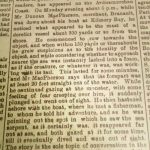
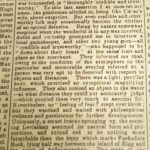
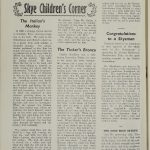
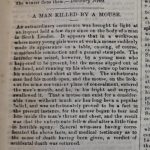
Below is an extract from a letter written by Lachlan Macintosh of Raigmore to the Secretary of Home Affairs. He is discussing the purchase of a newspaper because he doesn’t agree with its current politics. You can read a transcript of the letter here.
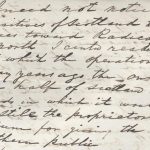
Photographs
You can see Culloden Battlefield in the background of this picture, recognisable from the cairn. The man in the photograph, Theodore Napier, isn’t actually at Culloden though, he has been superimposed! The next photo is from the Dounreay staff magazine Can you figure out what might be fake about these pictures?
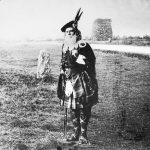
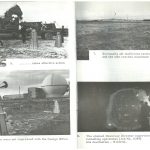
The photograph of Theodore Napier has been provided courtesy of our friends at the Highland Photographic Archive. You can find more information about him on Am Baile.
Mixed Messages
This document is from a Police Occurrence Book. It shows an investigation of the source of ‘false news’. A story had circulated about German parachutists having landed at Tulloch, which was not true. Upon investigation, it turned out the telegraph messenger had received a false message, given it to the Postmistress who reported it to the Police. Read a transcript of it here.
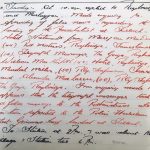
Propaganda
During the time of the Jacobite Uprisings, there was lots of propaganda published on both sides, like the document below. Propaganda is information published to promote a particular cause or point of view. It is still used today. Propaganda is untrustworthy, not always because the information is wrong (although that happens!), but because it is biased. This can mean it deliberately leaves out important information because it doesn’t support the cause. It can also mean it is prejudiced against a person or idea.
